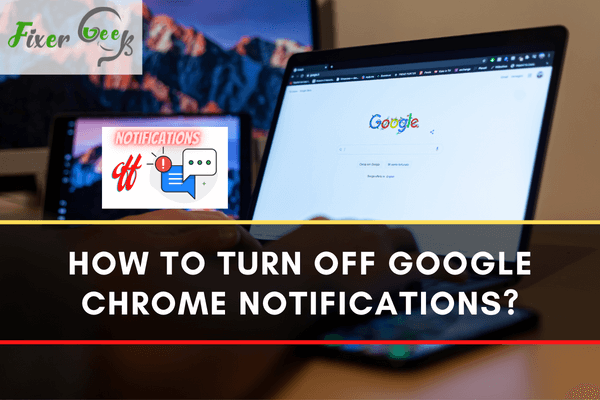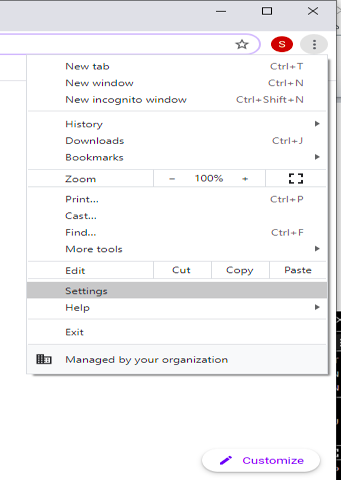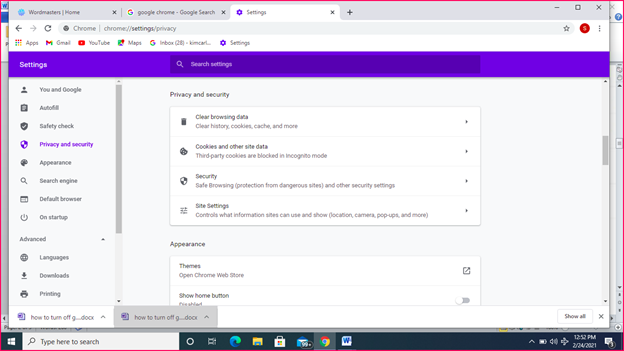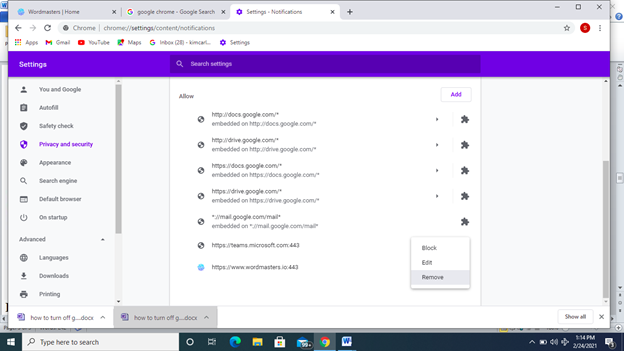Chrome is a great browser. There are so many features that others don't offer. But what if you want to turn off some of the features? Maybe you don't like them or they're distracting you while working. Or maybe they're annoying to you in some way. Whatever the reason, I'm here to help you turn them off and give you a better browsing experience.

Every time you open the internet, you receive a lot of notifications on your screen. These notifications can sometimes be helpful when enabled for specific websites that you visit regularly.
However, it might become necessary to stop notifications from Google Chrome completely, especially when the notifications become distracting and intrusive. You might not want to receive them. Or maybe you subscribed unintentionally, then you began receiving them on your phone or computer, but you want them out. You don't have to stick with the default settings.
Luckily, Google Chrome gives you an option to turn on, turn off notifications. But, Google Chrome notifications can only be turned off if you are logged into your computer. After you turn off Chrome notifications, you will stop receiving notifications on your desktop.
Steps to follow
Whether you want to disable notifications from a single site or all enabled ones, you can do this easily and quickly via Chrome's settings menu. Below are some steps on how to turn off Google Chrome notifications:
- Open Google Chrome on whatever device you are receiving notifications from and click the three vertically stacked dots in the upper right–hand corner of your screen to reveal a list of menu options.
- Click "Settings" to commence the procedure.

- On the Settings tab, scroll towards the bottom and tap on the segment named "Advanced."
- Under the "Privacy and Security," segment you will come across a sub-segment by the name "Site Settings." Here you can switch off notifications. Tap on "Site Settings."

- You will see the "Permissions" tab. Click "Notifications." At this spot, you can select if you wish to allow websites to send notifications to you or enable a setting that says, "Ask before sending." It might have been enabled before, so it's advisable to leave it that way. Thus, anytime a website wants permission, a pop-up will appear that questions whether to "Allow" or "Block" notifications. You can also choose separate websites to either allow or block alerts.
- Scroll down on the Notifications page under the segment marked "Allow," look for the site that you wish to remove notifications for, and tap the three horizontal dots on your right. You will see the options to either Block, Editor, Remove.
If you wish to stop the website from conveying notifications to you and also from asking once more, select "Block." Selecting "Edit" will permit you to change the website's name in your alerts which is not advisable. By selecting "Remove," the notifications will stop for the time being. Still, you might be asked once more if you wish to accept a subscription in the future. It is recommended if you are not sure you don't want alerts forever.
- Remove each link to stop notifications.
- Tap "Remove." The notifications for that site will stop. Considering that Chrome is linked to your Google account, if you make this alteration on one device, it must apply to all Chrome applications on your other gadgets.
- Repeat this process for any site or service that you wish to stop receiving Google Chrome notifications for. It's worth spending time removing sites from your Allow list, especially.
if you are pestered with notifications. Or, if there are sites that you care about and want to receive notifications from, keep those sites on your Allow list. Once you have blocked any new website from asking your permission to send notifications, you have effectively stopped unwanted website notifications on your computer.
Summary: How to Turn Off Google Chrome Notifications?
- Open Google Chrome on your desktop computer or laptop.
- Click the three dots in the upper-right corner of the browser window.
- Click Settings from the drop-down menu that appears.
- In the Settings page, scroll down and click Advanced.
- Scroll down again and click Site settings under Privacy and security.
- Find Notifications in the list of options below Permissions.
- Click Notifications. A list of websites that you've given permission to send notifications will appear, as well as a toggle to turn off notifications entirely — but we don't recommend this because it breaks most sites
- Go through each website in your list and check the settings for each one, changing them if necessary. If a particular website has permissions set to Ask whether you should be notified, but you find yourself receiving notifications anyway, go back to settings for that site and switch allow to Blocked.
- (optional): You can also stop certain site notifications using incognito mode in Chrome. To do so, open a new inc.
Final Words
Turning off Google Chrome notifications is important since it optimizes your browser for increased security and privacy because your browser may be leaking your data to advertisers or other people trying to see everything you are doing.